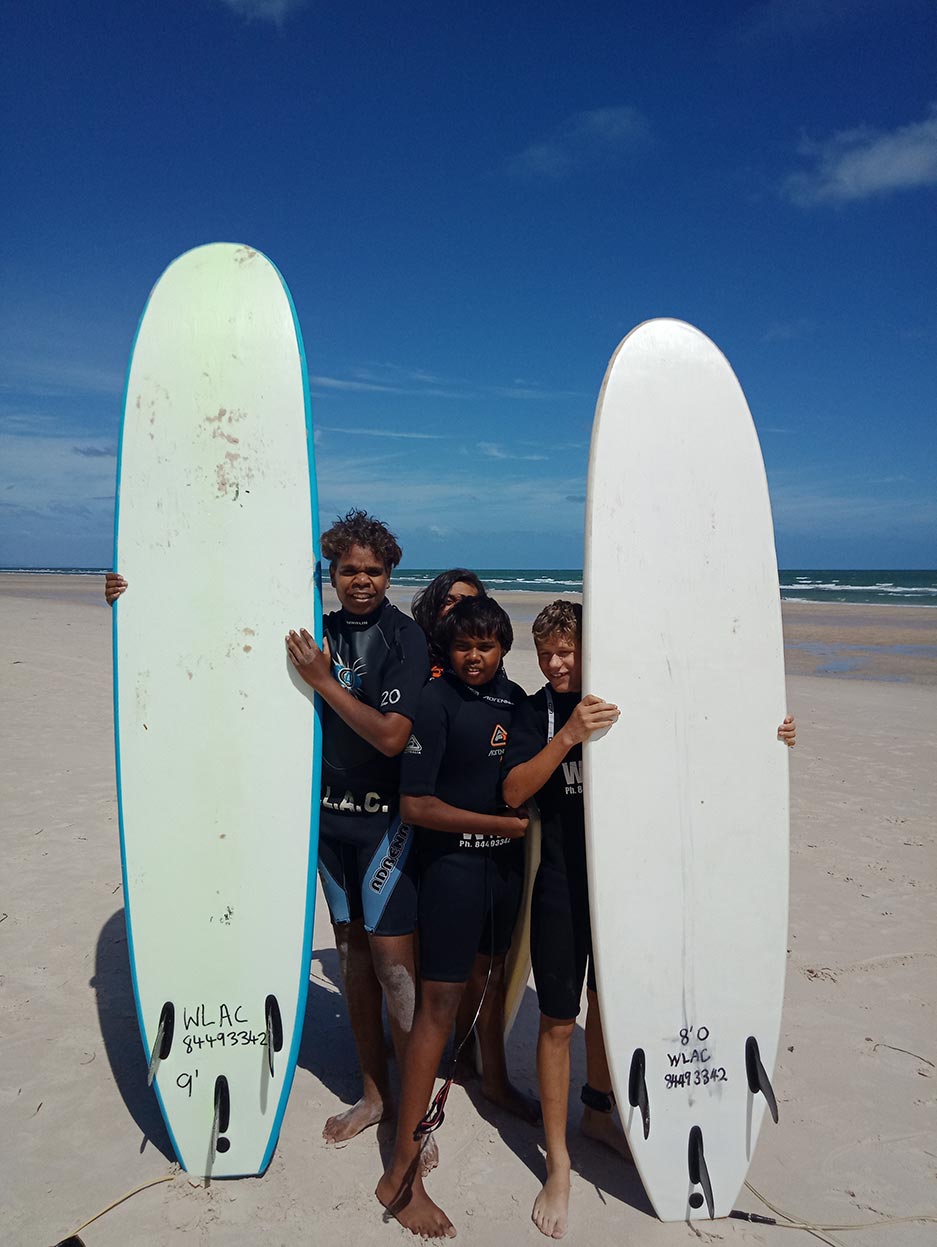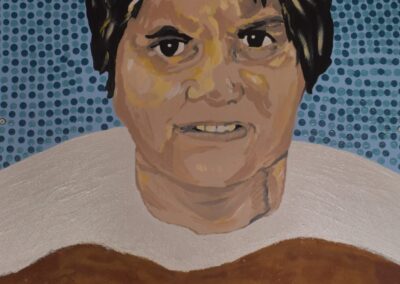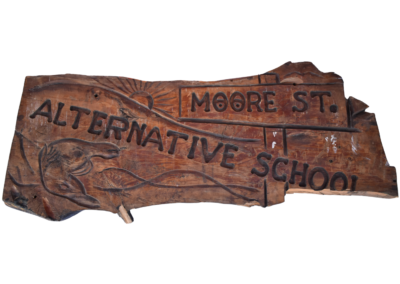The
History
Warriappendi School
A Brief History

As at the time of writing (January 2023), Warriappendi School has had three locations. It is also planned that the school will undergo a further move at the end of 2024 in order for the South Road expansion program to take place.
As far back as the 1960s and 1970s it became apparent to parents and educators that many Aboriginal children were not being served well by the conventional school system. Many of these children and parents came from the South -Eastern corner of the city of Adelaide. The parents and supporters came up with the idea of a school being established for them (many of which but not all were Aboriginal). The Education Department supported this concept and rented a room in Moore Street from the Church of England where Mary Magdalen church is still located. This became known as the South-East Corner School but did not last very long.
As the Education Department had considerable time left on the lease for the Moore Street building, they obtained permission from the State Government to use the site for a co-educational secondary school for Aboriginal and other students not succeeding in the mainstream system. This was the Moore Street Alternative School, established mid-1980.
The first Principal was Greg Winner who stayed with the project for many years. At the start there were about thirty students (Aboriginal and Non-Aboriginal).
Moore Street was the first site therefore of Warriappendi School. The building was not in good condition and perhaps even dangerous so an alternative site had to be located. The Education Department obtained 25 Naldera Street, Glandore which had many unhappy associations for many people having had a previous history of Glandore Boys Home, Edwardstown Girls Reformatory and even part of the McNally Training Centre. It did however enable the school to develop a cohesive staff and develop programs that were able to be put in place and which continued when the school moved to Marleston.
In February 1983 the Education Department secured a new home for Warriappendi on the site of the Richmond Infant School on South Road, Marleston.
Our Founders
The 1960s and 1970s saw a realisation that many Indigenous children were struggling in the conventional school system. The 1967 referendum had also added to the growing awareness of the needs of Indigenous people and allowed a small voice to be heard. The roots of Warriappendi came from this growing awareness and in 1980 parents and supporters in south-eastern corner of the city of Adelaide discussed the need to develop a school for these children.
Our founders were central figures in this development. The Ngarrindjeri/Kaurna sisters (Dorothy) Leila Rankine (1932-1993) and Veronica Brodie (1941 -2007) in conjunction with the first Principal Mr Greg Winner pushed very hard for the development of the Moore Street Alternative School and the move of this school to Glandore. This was the genesis of Warriappendi. Professor Peter Buckskin assisted the founders in searching language archives for a suitable Kaurna name – they chose Warriappendi (to search to find). This was historic in itself as it was the first time that Kaurna people had chosen a Kaurna name for public naming purposes (but has been repeated many times since).
Without these founders our school would not have existed and the much good that has been done because of the school would not have come into being.
A painting of each of the Kaurna sister ladies is in our common area. If you look closely at the faces you can see a smile. A very faint smile but a smile. I believe that they are pleased with what has been achieved. They also seem to be watching, guarding guiding looking forward not back.
In achieving this move the roles of our founders the Ngarrindjeri/Kaurna women, Leila Rankine (1992-1993) and Veronica Brodie (1941-2007) were extremely significant in driving the project. They had long been concerned for the welfare of Aboriginal children in conventional schooling.
Both Veronica Brodie and Leila Rankine had been significant in the establishment of the Moore Street and Glandore sites and eventually of course John Street, Marleston (the current site). They were both also significant contributors to many other social and educational improvements for Aboriginal people.
In conjunction with the original principal Mr Greg Winner, they lobbied the government for a school with a more Aboriginal focus. The role played by Greg Winner was also enormously significant in the establishment and continuance of Warriappendi School.
Since the move to Marleston, a new Aboriginal identity was forged. It was felt that a new name for the school should also be established. The founders had an interest in disseminating the Kaurna language and worked with Professor Peter Buckskin in order to achieve these objectives. As a result of this search the Kaurna name “Warriappendi’ was chosen meaning ‘to seek’ or ‘searching for’. The naming of the school was particularly important as it was the first time that Kaurna people themselves had chosen to use a Kaurna word for public naming purposes.
The Sign
In the early years the Warriappendi School sign hung in front of the school’s main building. It has survived all those years and is still there today although it is about to undergo a minor repair to its pant work. In fact, the sign predates the opening of the Marleston site and was first hung at Slade Cottage Glandore.
The sign is very significant and very historic. It was carved from a large carefully polished slab cut from a tree, with the name Warriappendi’ engraved across the sign. If you turn it over it has the first name of the school on the reverse “Moore Street Alternative School’. This sign was carved by Elders for the school and again in line with being the first time Kaurna people had named something for public purposes. The sign and the naming of ‘Warriappendi’ greatly stimulated further interest in re-energising the Kaurna Language.
The drawings on the sign include a platypus – to symbolise survival, individuality and adaptability- and a rising sun, denoting new beginning, warmth and a radiance which falls equally upon all. Important too is a symbol representing peace- two crossed hands, one black, one white, emphasizing the need for all cultures to work together and to understand, respect and care for one another.
A sign was also needed for the school. In the early years the Warriappendi School sign hung in front of the school’s main building. The sign was made from a large carefully polished slab cut from a tree, with the name ‘Warriappendi’ engraved across the sign. The sign included a drawing of a platypus – to symbolise survival, individuality and adaptability – and a rising sun, denoting a new beginning, warmth and a radiance which falls equally upon all. A symbol representing peace – two crossed hands, one black, one white was also part of the sign, emphasizing the need for all cultures to work together to understand, respect and care for one another. Now, over 38 years later that sign still exists and is still doing its job communicating the Warriappendi message to all who enter the school.
Perhaps surprisingly much of the school is significantly the same as when it was started. Alterations have taken place from time to time to make functioning more effective for students but the overall school is pretty much as we started! A time traveller from 1984 (apart from the new technologies of computers and the like) arriving today might think that they had arrived a few years after the opening of the school here in 1984!
Now though in 2023 Warriappendi is searching again. Not so much for a new home, we know where that will be. We are searching more for new opportunities, new futures, new beginnings, new opportunities for our students (just as we always have been); our new journey is beginning.
Sources for the historical information in this document include:
T.Lovegrove and Gloria Sparrow, An Introduction to Warriappendi School (1984).
Mary -Anne Gale (2002) My Side of the Bridge, The Life Story of Veronica Brodie
Yunan the Warriappendi School Newspaper 1983-1989
West Torrens Council Historical Association
State Records of South Australia
Rose Irving Personal Recollections – Teacher at Warriappendi School 1986 2010
Josephine Judge-Rigney and Karen Leffers
Professor Kay Whitehead




